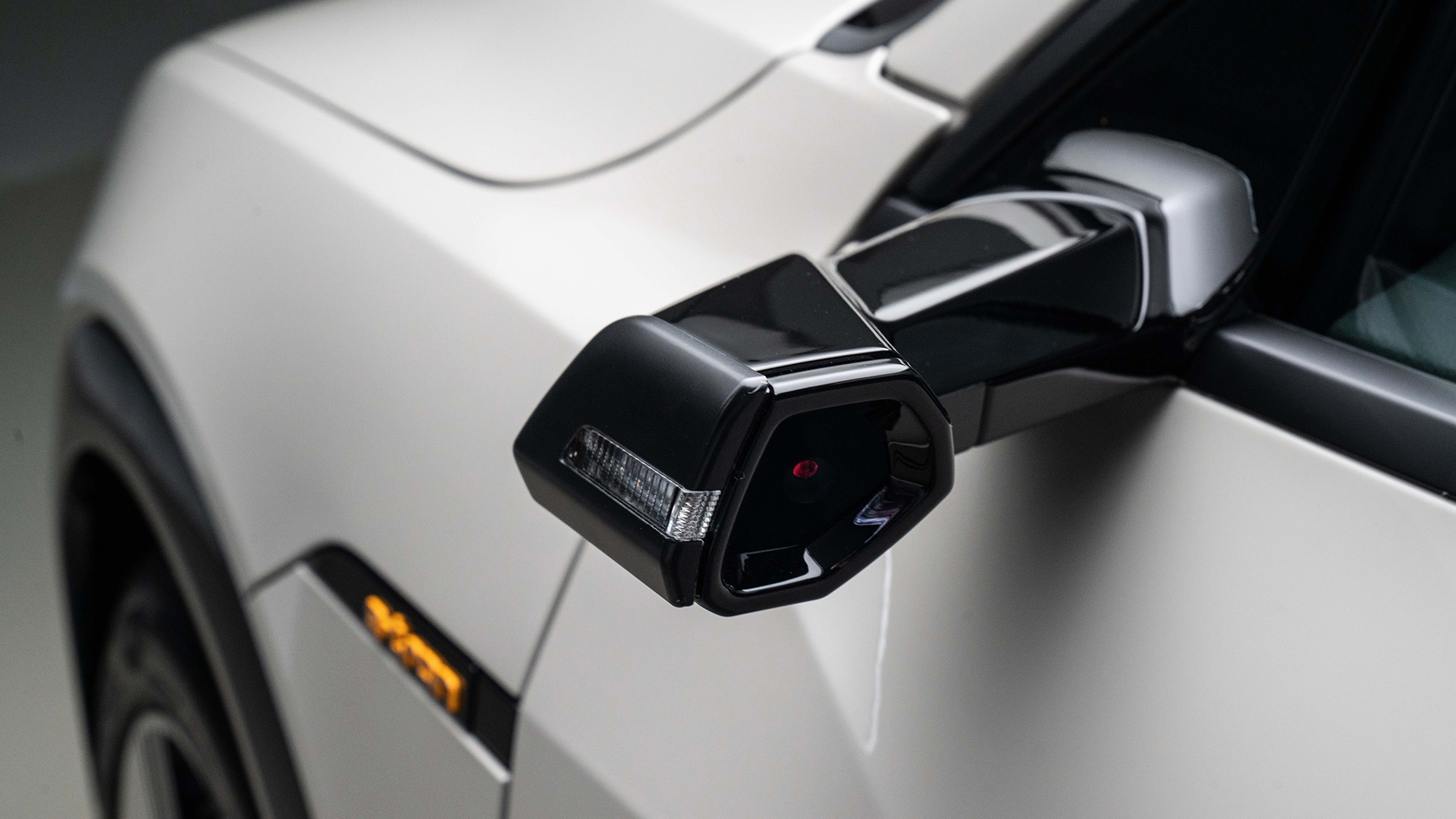

Of the multiple innovations present in the Audi E-tron electric SUV—from its ultra-precise all-wheel-drive setup to its brake-by-wire tech—the virtual mirrors are the most radical, from a consumer’s point-of-view. It’s one of a few innovations a carmaker can offer that basically requires drivers to rewire their brains, at least a bit. This tech, which replaces traditional wing mirrors with smaller cameras and door-mounted interior displays, doesn’t exist in production form anywhere outside of an Audi dealership (so to speak). Unfortunately, it’s not coming to the United States in the foreseeable future; Audi can’t offer it on U.S.-bound vehicles, because regulators here haven’t yet seen their way clear to approve it. The American government generally prioritizes new features with proven safety benefits, which they haven’t seen for the virtual mirrors; and even features with apparent safety benefits still take years to work through the system. (Audi says it’s still lobbying regulators, but a source inside the company indicates that it’s virtually a lost cause, at least for now.)

While we won’t get to use Audi’s virtual mirrors here anytime soon, a first glimpse of the system during a studio visit with the E-tron in Germany months before its reveal and a second glimpse while driving a prototype in Namibia gave me some valuable first-hand experience with the tech. Driving the car in the blazing sun of the sub-Saharan day and absolute darkness of the African night proved the tech is indeed a game changer—even if it will likely benefit from future improvement.

Functionally, the E-tron’s system is straightforward. Instead of the conventional glass side mirrors, Audi installed two smaller, rearward-facing nacelles with cameras inside. This sleeker arrangement not only improves the visual look of the car—after all, wing mirrors are essentially warts, design-wise—but it also improves drag, narrows the car by six inches, and cuts down dramatically on interior noise. (The latter is particularly important for electric vehicles, since they’re already inherently much quieter than combustion vehicles.)
The cameras send exterior images to OLED screens mounted in the door, a few inches below the window and in roughly the same direction you’d glance when scanning conventional side mirrors. It requires a bit of mental recalibration to get used to glancing at the screen instead of the outside camera, but once you do, the placement feels just as natural as conventional mirrors.

As for the screens themselves, they are somewhat oddly skewed—as though as though drawn to precisely mimic the shape of conventional mirror as seen from the driver’s perspective, perhaps to help us get used to the idea. It’s hard to say if a different shape would be better—more rectangular, or more circular, or some other geometric configuration that better capitalizes on the new tech. As a result, the potential benefits of a camera-based system don’t feel fully exploited; when you look at the mirror, the image seems clipped and rigid, as though looking through a toilet-paper tube. (Well, one shaped like a car wing mirror.)

This does create a bit of tension when using the system, because we use conventional mirrors for more than just for a quick glance while passing. People move theirs head around to “re-aim” the mirror, or double-check your blind spots; you might even move in a hair closer to expand the field of view slightly. Because mirrors reflect, they seem to pivot like gimbals as your perspective changes, making for a naturally dynamic—and hence more useful—experience. With virtual mirrors, you’re looking at a fixed, immovable image. The field of view can be adjusted slightly, and the mirrors can be aimed by touching the screen and dragging the image—but you do that during your initial setup when the car’s parked, not while driving. In motion, what you see is really all you get. That might not be a bad thing—a fixed image may ultimately prove to be the most reliably useful. But it still feels slightly stilted and confining. You instinctively want to see more of what’s out there, but the screen won’t let you.
Another minor complaint is with the screen resolution, which presents a similar challenge to the virtual rear view mirrors released already, most notably by Cadillac. While the contrast tends to be very good, the resolution simply doesn’t match human visual acuity. When you look at a conventional glass mirror, your eyes instantly make out details, even in distant objects. You can tell what kind of car is behind you—including whether it has light bars on the roof, for instance—detect infinitesimal levels of movement, pick out your buddy’s car from a pack, and immediately adapt to lighting changes. With a camera-based system, however, your view is only as good as what the camera can see, in terms of overall image quality, resolution, contrast, dynamic range between bright and dark areas, and instantaneous adaption to sudden changes in light.




The view from the Audi system, as presented in the OLED screen, is bright and crisp and perfectly functional, but not better than natural human vision. Indeed, under the harsh, direct light of the African countryside, it looked washed out, as though the sensor had redlined and couldn’t match the brightness outside. (It certainly helped to roll down the window occasionally and wipe the lens clean of desert dust with your thumb, but the limits were still there.) The nighttime views were useful, but again, lacking the little details your eyes pick up in milliseconds conventionally.
This is simply the first generation of this technology, of course. And it’s possible that most users won’t notice (or care about) nuances in image quality or resolution; all they may want to know is whether there’s a car beside them before changing lanes. But as we hear more and more about future visions of augmented driving and virtual views and windowless vehicles, Audi’s new virtual mirrors provide a solid reminder that it’s not just the basic working operation of these high-tech systems that’s important—it’s the details, too.










